Yoga Anatomy Lab
4-day human dissection with Jules
This course is for yoga teachers and committed students who wish to observe the mechanical properties of human connective tissue and get a visual and tactile sense of human movement.
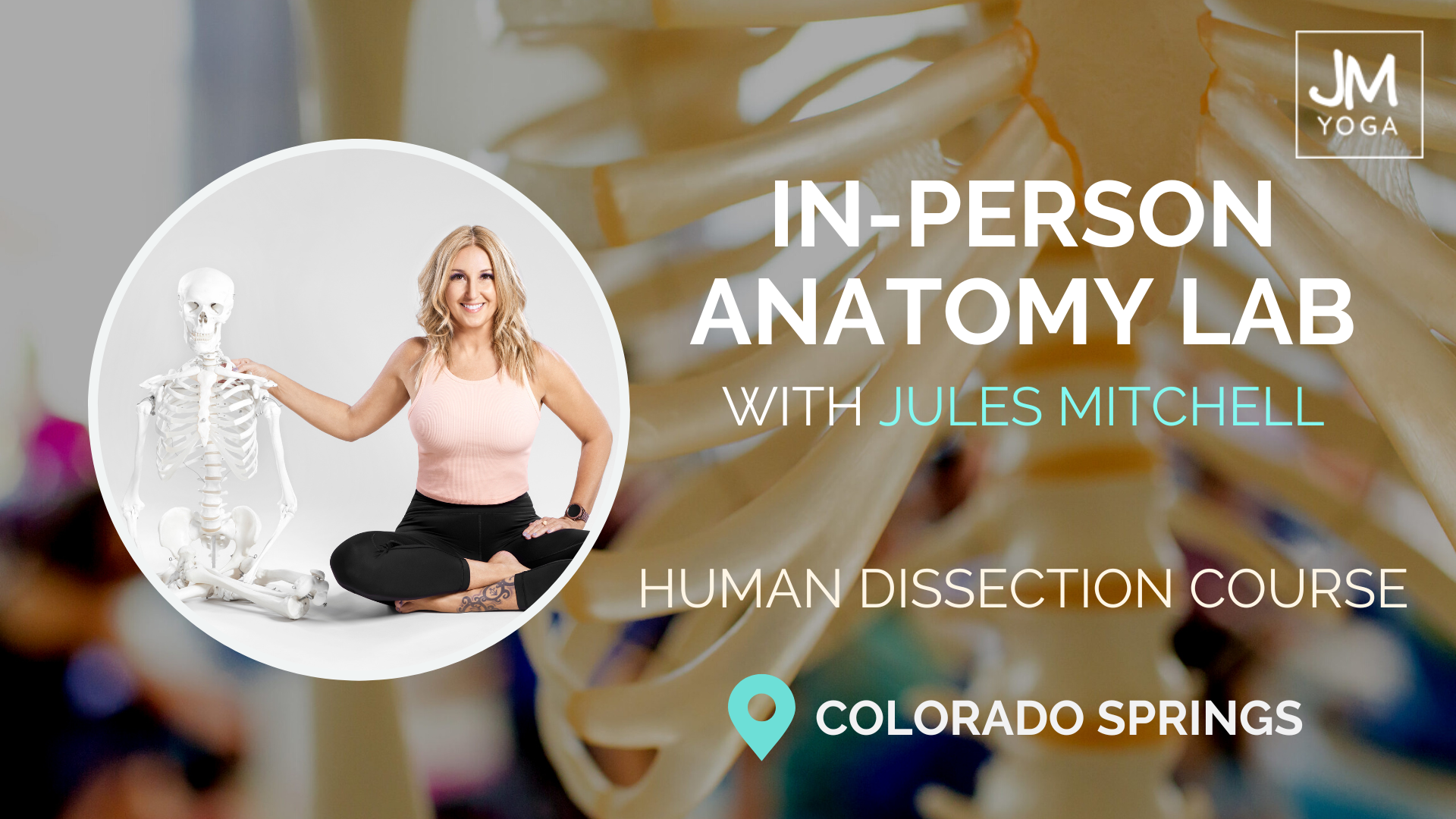
Tuesday-Friday
June 9-12, 2026
10:00am – 6:00pm local time
Institute for Anatomical Research
Colorado Springs, Colorado
$2000 USD before March 1, 2026
$2250 USD after March 1, 2026
Tuesday-Friday
June 9-12, 2026
10:00am – 6:00pm local time
Institute for Anatomical Research
Colorado Springs, Colorado
$2000 USD (4 x $500 USD)
First installment due Feb 1, 2026

Human Dissection Lab Objectives
Explore connective tissue mechanics, yoga anatomy of the musculoskeletal system, and breathing mechanics in a hands-on in-person cadaver lab. Eligible for 28 CEUs upon completion.
In this 4-day course, we will dissect:
-
Muscles
-
Fascia
-
Tendons
-
Ligaments
-
Joint capsules
-
Bones
-
Organs
If you wish to explore a specific structure not on the list above, that can be arranged as a personal side project for you with prior communication.
Course Description
This yoga anatomy course is for yoga teachers and committed students who wish to observe the mechanical properties of human connective tissue and get a visual and tactile sense of human movement. The program includes a group Zoom meeting before and after the lab plus content-related reading.
In this lab, you will dissect specific anatomical structures of an embalmed cadaver (*unless a frozen cadaver is specified in a special lab situation). You will be doing the dissecting yourself, allowing you to touch, feel, and discriminate the structures noted on the course itinerary. Of course, some prefer to spend most of their first time in the lab watching and listening, which is equally as rewarding.
No prior dissection skills are necessary. We will meet you where you are and support you in the level of involvement that works for you.
However you choose to take in the content, you’ll walk away with a greater understanding of anatomy and biomechanics, especially as it relates to how we teach yoga.

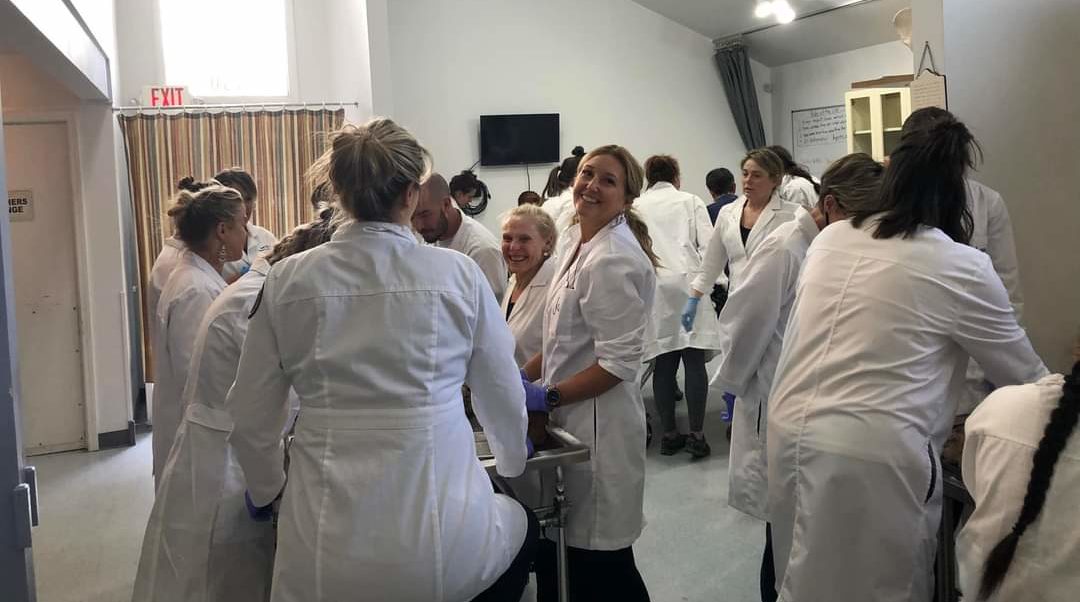
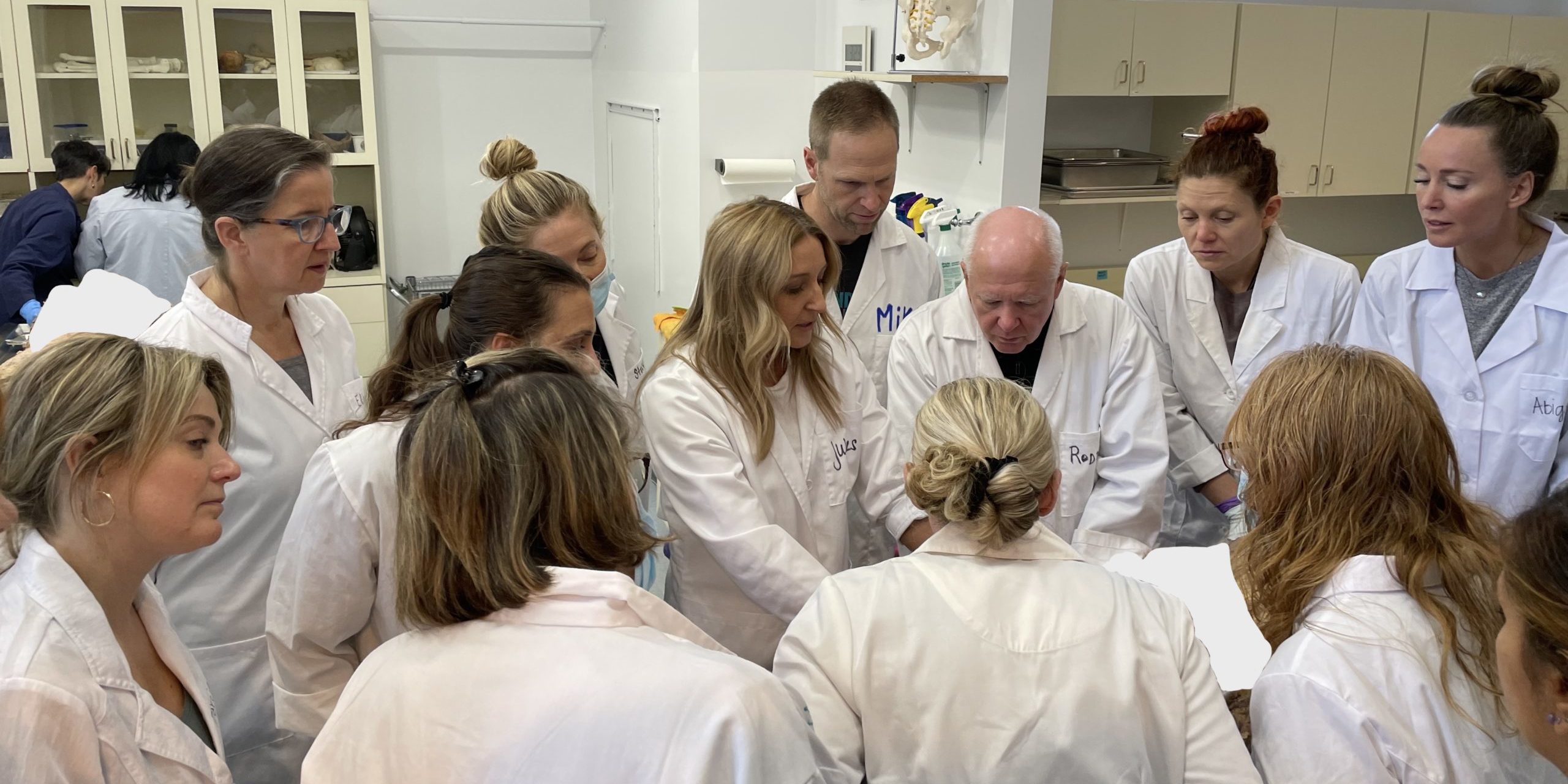
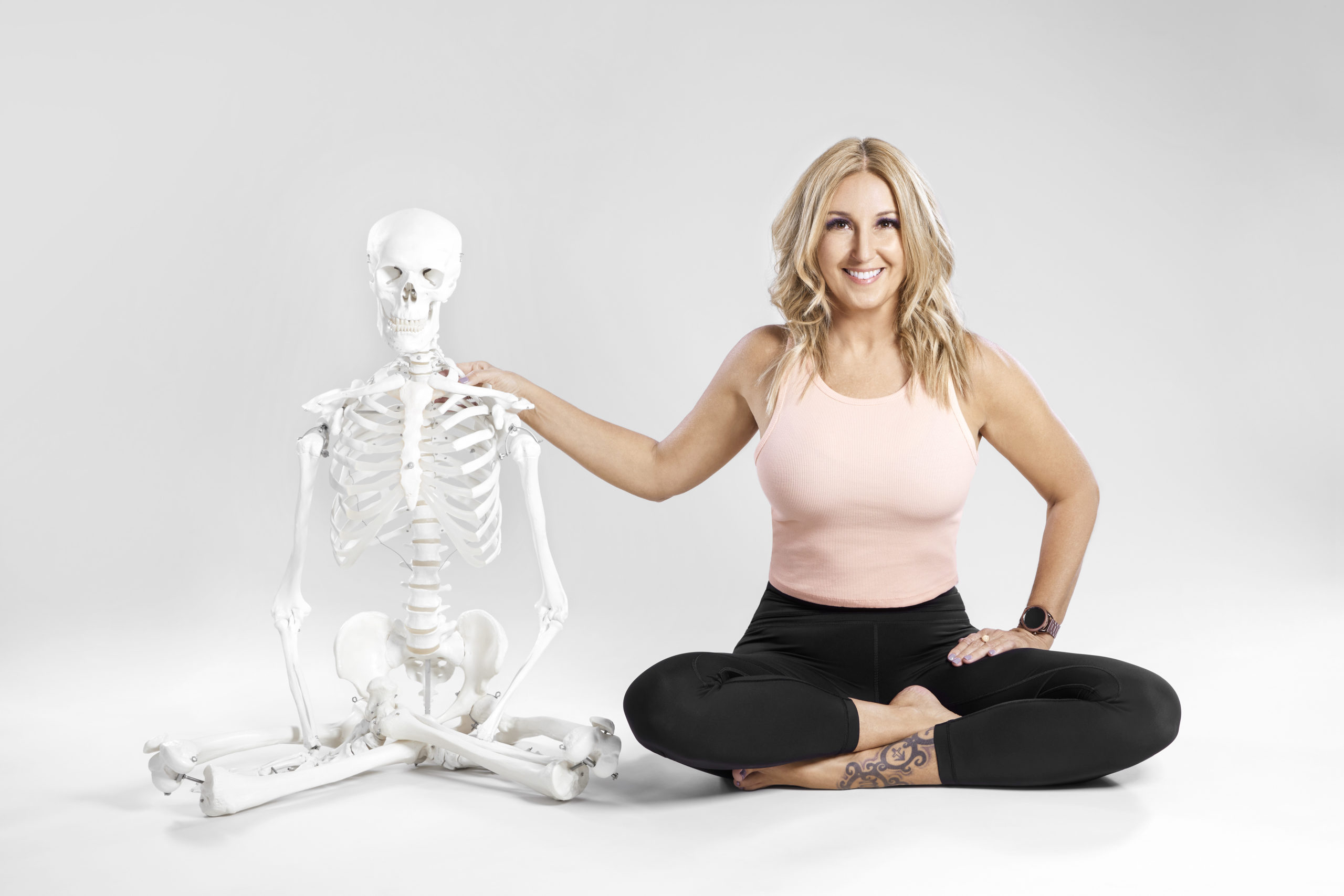
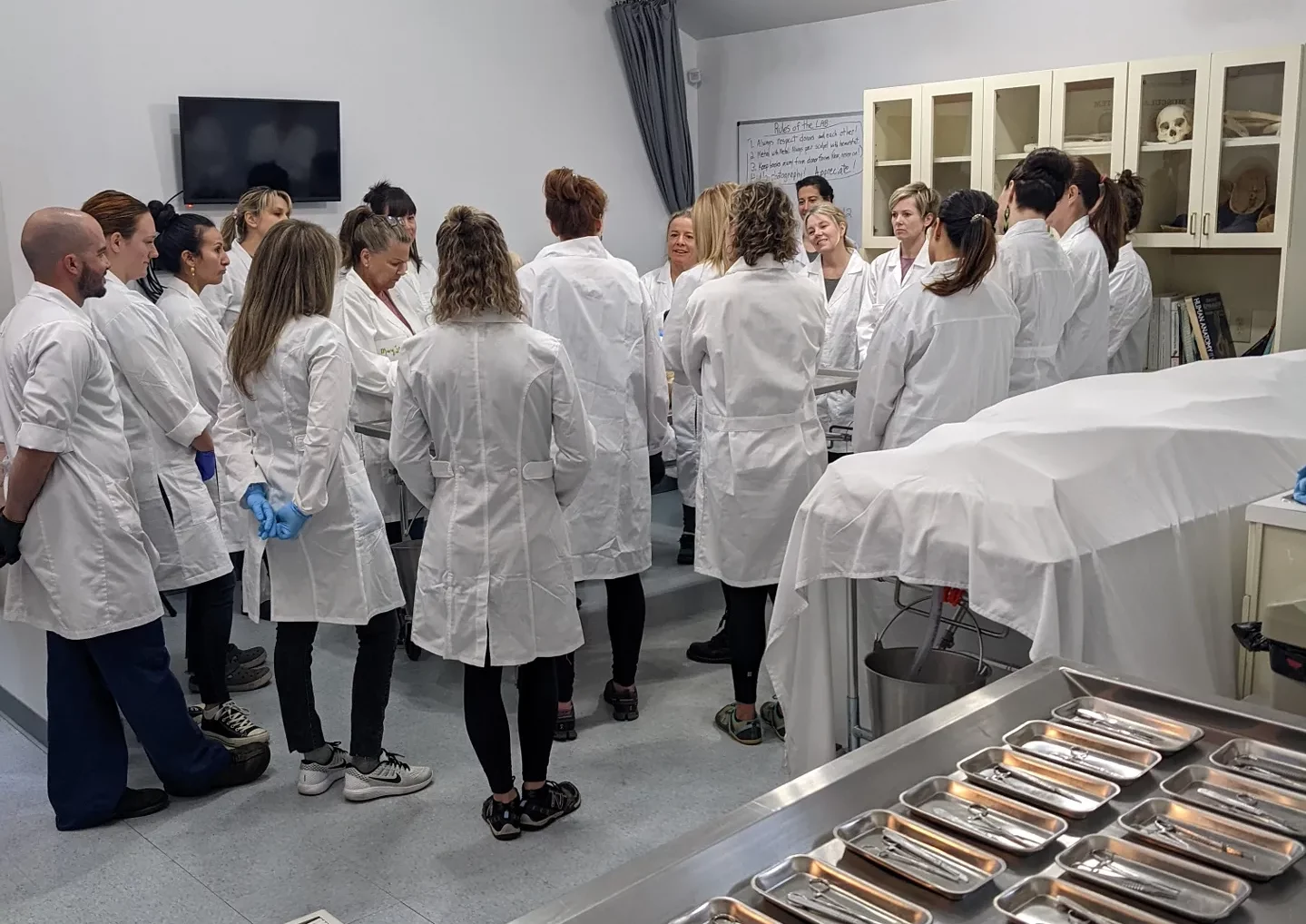
Course Topics
- Connective tissue behavior and stretching
- Muscle continuity, fiber direction, and function
- Specific joints such as the shoulder, knee, hip, and more
- The psoas and whether it deserves its fame
- The poor misunderstood upper trap
- The incredible SI joint
- Synovial fluid and joint capsules
- Anything and everything about the spine and vertebral discs
- The connection of the heart, lungs, and diaphragm
- Layers of the abdominal wall
- The role and evolution of the IT band
- Identifying capsular muscles
- Labrums, menisci, and bursae
- The vagus nerve
- Nerve plexuses
- The pelvic floor
- The plantar fascia
Course Includes
- 2 x 30-minute group Zoom meetings led by Jules
- 4 full days in the lab led by Jules
- Several lab assistants for extra support
- Lab tools and equipment
- Suggested reading from Jules' book related to the course work
- Access to a private social network for this special cohort
Not Included
- Lab coat and gloves
- A copy of Jules' book
- Travel to and accommodations in Colorado Springs, CO
How do I know if the cadaver lab is right for me?
- Do you think you know nothing about anatomy?
- Do you think you know everything about anatomy?
- Do you find textbooks to be painfully dry and two-dimensional?
- Are you in awe of the human body?
- Are you curious about human movement?
- Have you heard the spine is unstable?
- Have you heard the knee joint is fragile?
- Have you wondered what happens to musculoskeletal tissue when we age?
- Can you picture what tendinopathy, osteoarthritis, or a bulging disc looks like?
- Are you skeptical of overcomplicated models of human movement?
- Are you skeptical of oversimplified models of human movement?
If you answered yes to any of these questions, this lab is for you.
The primary concern I get is about knowing too much or too little anatomy. The lab has a way of leveling the playing field. Everyone sees something they have never seen before and everybody learns from the curiosity of others. A beginner’s eye can often see things in a way that the expert’s eye can’t, and vice versa.
The second concern is usually about the ick factor. Since the cadavers are embalmed, or “fixed,” (*unless an unembalmed/frozen cadaver is specified in a special lab) there is little to no blood and pathogens have been chemically cooked. If you have ever changed a diaper, picked up after a pet, or held a heaving, drunk girlfriend’s hair back, you’ve experienced grosser things than you’ll encounter in the lab. That said, you are welcome to take breaks and step outside anytime you feel overwhelmed.
The third concern is usually around confronting illness, death, and our own mortality. The lab environment is reverent, supportive, and collaborative. We have daily share circles as well as pre and post-zoom calls to process, share, and pay respects. Expressing emotions is okay and normal. We love you.
About The Instructor
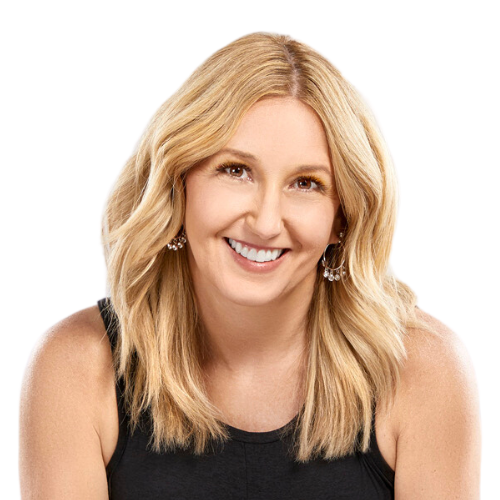
Jules Mitchell, MS, LMT, E-RYT 500
Jules Mitchell leads advanced continuing education programs in biomechanics for intellectually fearless yoga teachers. She helps them integrate principles of exercise science and applications of pain science into their classes. Jules is the author of Yoga Biomechanics: Stretching Redefined, a unique, evidence-based exploration into the complexities of tissue mechanics and the human body’s resilience and adaptability.
She leads workshops and courses online and worldwide, runs a popular 300 hour yoga teacher training, frequently serves as guest faculty, and hosts a comprehensive mentoring program to support teachers in both education and business. Her passion is bringing the most useful and applicable research-based concepts into the yoga community, even when it invokes a discerning analysis of popular opinions.
Human Dissection Lab
Register for an unforgettable experience in the lab. Choose from 2 payment options:
Tuesday-Friday
June 9-12, 2026
10:00am – 6:00pm local time
$2000 USD before March 1, 2026
$2250 USD after March 1, 2026
Tuesday-Friday
June 9-12, 2026
10:00am – 6:00pm local time
$2000 USD (4 x $500 USD)
First installment due Feb 1, 2026
What Students Are Saying
It was life-changing in so many ways, but the amount of one-on-one attention was not what I anticipated and was very appreciated.
It was extremely valuable to me to work with Jules the entire 4 days of the lab. I benefited from her knowledge, enthusiasm, and yoga-specific connections to human anatomy and the work with the forms. I loved her approach with me when I was actively diving in (and when I was not). It was a perfect balance of letting me see what I could discover on my own and leading me to the treasures. I remain thrilled to have seen the beautiful way things evolved to fit together. Jules’ welcoming, knowledgeable, and caring approach made the intense experience wonderful. The other teachers were outstanding too. What an unparalleled experience!
I appreciate how organized things were, from recommended readings/videos prior, daily protocols to suit up and decompress, outline of goals each day with flexibility & encouragement to be curious and explore, leading us through key moments like the knee joint, diaphragm, and so much more. I’m still processing everything and journaling what I can recall to flesh out the “A-ha” moments and other major revelations.
Being in the lab is a refreshing reprieve from a typical training or workshop in the yoga room. Everyone is on the same playing field of expertise and exploration. Jules cultivates an environment that is lighthearted and encouraging to ask questions and excavate the unknown.
I valued the whole experience, not only the actual lab time, but the care that was put into the structure of the curriculum, to our time together in the circle. I valued the collaborative environment that evolved with our peers and the support of the team at the institute. Jules was readily available to answer questions and offer encouragement. I valued the attention I received when engaged in discussions with her and Madhav as well. Overall, I value the opportunity to learn with Jules and the amazing team at the institute in person.
Frequently Asked Questions
Who is doing the actual dissecting?
You are! This is a hands-on participation course. Don’t worry, there are plenty of assistants to help you with dissection techniques. And of course, you are more than welcome to put your tools down and watch, especially when Jules is doing a demonstration.
What if I want to see something specific?
No problem. You are invited to share your interests prior to the course and Jules does her best to satisfy your wishes. Of course, as with the unpredictability of both human anatomy and group dynamics, there is no guarantee.
What if I can't handle the smell or the emotions?
You are free to take breaks away from the lab in the classroom area and outside. Our team is committed to supporting you with company or by letting you be alone, just communicate your wishes to us.
Are there any prerequisites for this course?
There are no prerequisites. This course is open to yoga teachers, fitness professionals, and committed students who want to learn more about anatomy.
How many CEUs will I get for taking this course?
You will earn 28 CEUs for the 4-day lab.
What if I can only attend part of the time?
You’ll get the most out of the lab by attending the entire time. It is not recommended that you arrive late or leave early. If you feel you have a special circumstance that warrants an exception, send us a message so we can discuss it prior to you registering.
What is your refund policy?
All sales are final. No refunds. If you have concerns about whether this course is right for you, send us a message with your questions.
